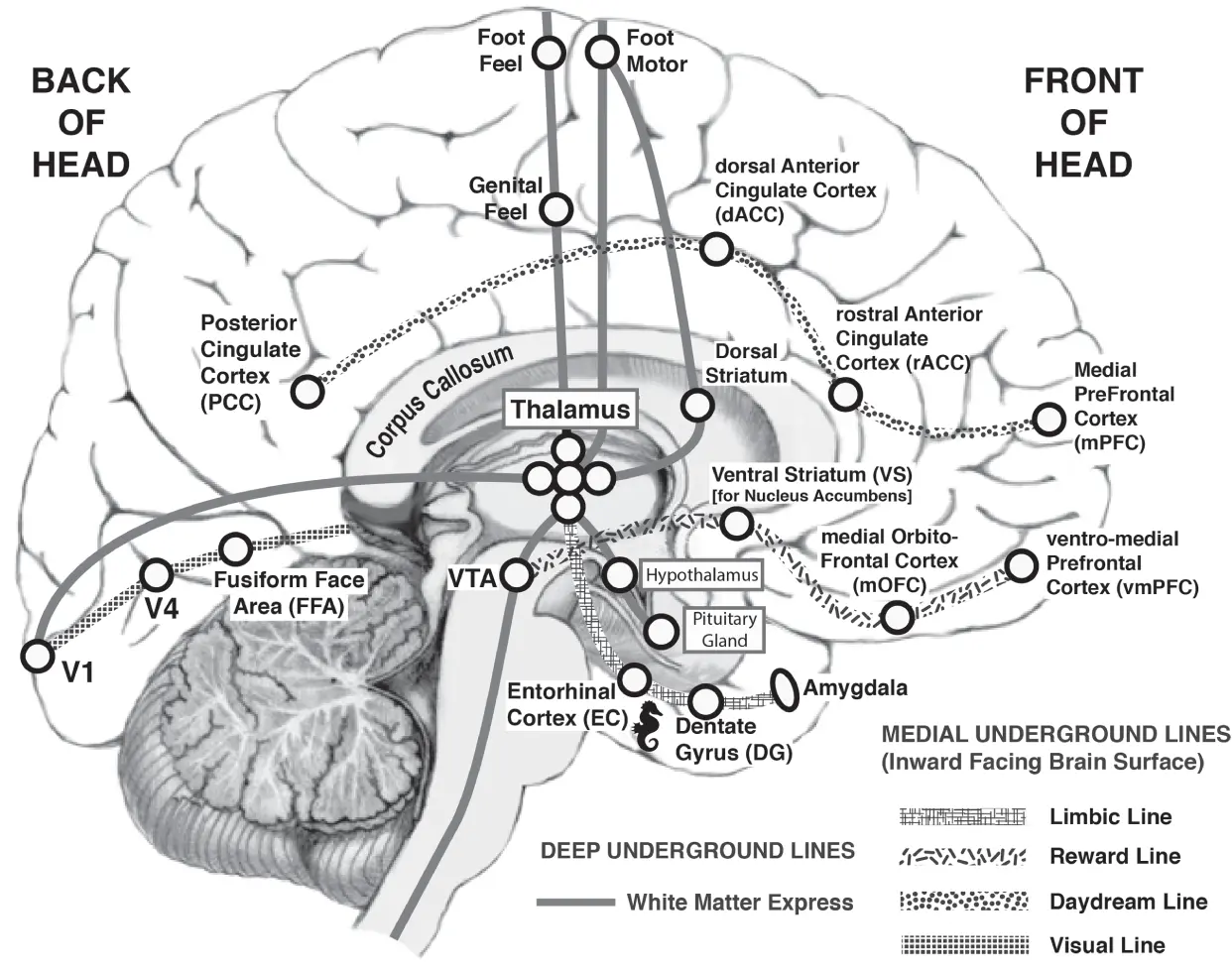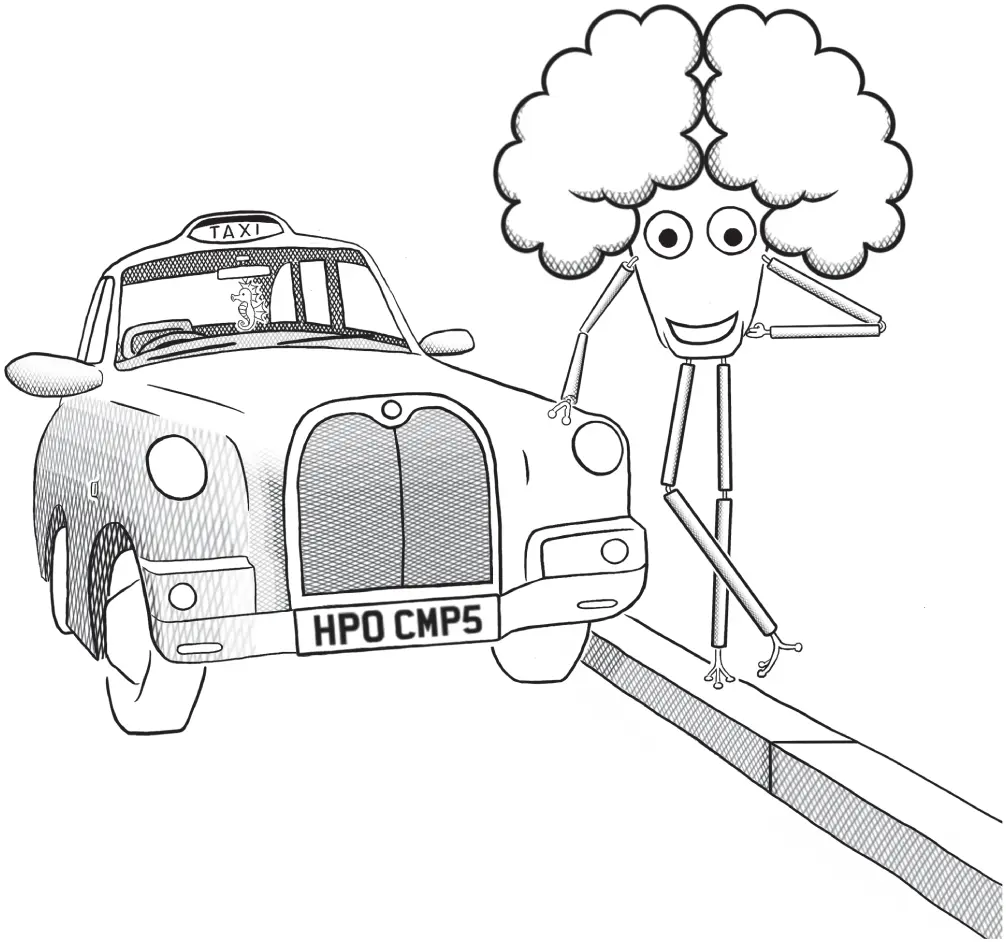The word “amazing” seems to be used pretty loosely these days to describe a lot of things, many of which often turn out to be disappointingly mediocre, but in the case of your brain there really is no other word that does it justice.
This wrinkled pink lump of pulsating wetware has a texture not dissimilar to blancmange, is composed of around 80% water, 11% fat, 8% protein, 3% vitamins or minerals and weighs in at around about 1.5kg. It is a densely woven meshwork of 86 billion brain wires (neurons) along with a further 86 billion support cells (glial cells), all neatly packed away in the cavity between your ears. It is truly amazing.
As the ultimate supercomputer, your brain is currently light years ahead of anything that humans have so far managed to create. It works relentlessly, nonstop, around the clock, continuously reshaping to adapt our skills and behaviours to suit an almost infinite variety of different real and potential future circumstances, receiving and delivering data, analysing information, performing billions of complex, multifunctional tasks in parallel and monitoring millions of functions, all at a breathtaking speed. Its capabilities really are quite staggering.

When it comes to high performance, what does your brain look like?
The map in the illustration above shows some of the stops on the underground system that runs right down the middle of your brain, level with your nose. This particular image is referred to as the “Inward‐Facing Brain Tube Map” because it shows the inner brain surface, where the left and right hemispheres rub up against each other along the midline. It's duplicated at the back of the book – in the Appendix – so you can find it again more easily. You'll also find an “Outward‐Facing Brain Tube Map” there too. Both maps are also available at www.sortyourbrainout.comfor anyone listening via audiobook.
No benefit would come from overloading you with unnecessary information by talking about every area of your brain, but it would be useful to start by pointing out three key areas that are most relevant to what we'll be discussing in this book. The hippocampus includes the DG (Dentate Gyrus stop) and EC (Entorhinal Cortex stop) on the lower part of the Limbic Line, a particularly dense area of networked brain wires connected with virtually every other part of your brain.
You may be wondering why there is a seahorse in the illustration of this medial surface (inward‐facing) tube map of the brain. If your brain's hippocampus was surgically removed from the inward‐facing surface of each of your temporal lobes, you'd see that they actually look very much like a seahorse. Indeed, the word “hippocampus” comes from the ancient Greek hippos (“horse”) and kampos (“sea monster”).
This part of your brain performs three key roles:
1 It helps you to keep track of where you are – a GPS system of sorts that gives you a sense of where you are and how to get where you're going.
2 It enables you to create and recall memories of events and pieces of information, so it's essential for the accumulation of knowledge and the ability to learn from experience.
3 It's even vital for our ability to imagine the future!
The first two of these functions are intimately related, as many of our memories of life events are closely intertwined with the places in which they were experienced. This is why, when you return to that place, the most relevant memories will be triggered. Hence a visit to your old primary school can produce a surge of long‐forgotten memories. The hippocampus cluster of tube stops in your brain is buried deep down within each of your temporal lobes. These run along the left and right sides of your brain, from just above and behind the ears to the temples of the skull.
The drivers of London's famous black cabs spend, on average, 2.2 years learning “The Knowledge,” a seemingly unconquerable mountain of information to commit to memory by anyone's standards. Without looking at a map, they need to be able to describe how they would use the 20,000 major routes and the whereabouts of 25,000 places of interest that a fare‐paying passenger, having hopped into the back of their cab, might want to visit.
During this period of exhaustive information ingestion, the rearmost parts of the hippocampi of these wannabe cabbies grow physically larger due to all the extra connections required to retain that information – only to return to their normal size shortly after retirement. It really is a case of use it or lose it!
What this shows is that your brain not only adapts to take on new challenges, but it physically restructures itself to meet them. As yet, there is no computer capable of reconfiguring itself in this way to cope with new demands asked of it. Not bad for a design that first appeared on the scene back in the Stone Age and which still outcompetes the most complex computing systems of the modern age (for the time being at least)!

Just beside the DG stop you'll find the amygdala tube stop. This ever‐alert brain area is responsible for, among other things, generating various emotions and constantly monitoring the sensory information being captured from your surroundings for signs of potential danger. Like a military listening post for your brain, it is forever looking out for possible threats to your well‐being, always primed and ready to push the “big red button” that orchestrates the feeling of fear a split second after possible danger has been detected. This is the part of your brain that, within less than a semiquaver of time, having heard a loud bang or spotted a rapidly approaching object coming your way, causes you to freeze in your tracks, duck out of the way or simply jump out of your skin – before you're even fully aware of what it is you're dodging. With your heart now pounding and your muscles flooded with blood, you're all set: ready for a confrontation or a hasty exit.
During early pregnancy 250,000 new neurons are created in the foetal brain every sixty seconds!
Just above the amygdala tube stop is the Reward Line. It evolved to trigger pleasurable sensations whenever you engage in behaviours that promote the survival of the species (i.e. eating, drinking and having sex). Known collectively as the reward pathway – the VTA (Ventral Tegmental Area), VS (Ventral Striatum) and OFC (OrbitoFrontal Cortex) stops – are also critical to decision‐making.
The VTA stop in the midbrain – just above the brain stem – is the starting point of the Reward Line and is where all of the brain's dopamine is manufactured. While dopamine is involved in helping the right messages reach their intended destinations in many separate brain pathways, each playing a different role in overall brain function, the VTA itself is reliably activated by life's pleasures.
The responses of the next stop on the Reward Line – the VS stop, which contains an important structure called the nucleus accumbens – are a bit more sophisticated. Rather than just being involved in triggering rewarding feelings in the moment of doing something pleasurable, it provides a prediction of which of a range of available options is likely to trigger the greatest reward in the future . This means that the Reward Line is not only instrumental in helping us make every single decision we make, but it is also fundamental to the process of learning to make better decisions. Whenever our decisions deliver a reward that is smaller than or greater than the anticipated reward, the Reward Line system updates its predictions accordingly. Without the reward pathway, we would never learn from our mistakes!
Читать дальше














